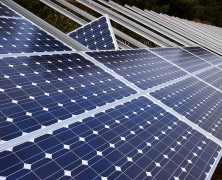By tapping into the sun’s immense energy, “transformative” LED technology is providing clean, efficient lighting for millions of people around the world. Solar LED lights represent not only a dream scenario for the environmentally conscious, but also a chance to provide light in developing countries where access to electrical grids is scarce. The LED industry has come a long way in the past decade. To illustrate this process, the 2014 Nobel Prize in Physics was awarded to Isamu Akasaki, Hiroshi Amano, and Shuji Nakamura for inventing the blue LED in the early 1990s, which ultimately allowed for the creation of white LED light. “The LED lamp holds great promise for increasing the quality of life for over 1.5 billion people around the world who lack access to electricity grids,” the Royal Swedish Academy of Sciences noted in their Nobel Prize press release. “Incandescent light bulbs lit the 20th century; the 21st century will be lit by LED lamps.” One of the great opportunities provided by LEDs is the harmonious relationship they hold with clean, renewable solar energy. Photovoltaic panels create solar energy by converting the sun’s rays into direct current (DC) electricity. This DC current, in contrast to the alternating current (AC) electricity of the conventional grid, is the same form of electricity used by LED lighting. In fact, photovoltaics are also composed of diodes that in many ways are the inverse technology of LEDs. Most of the time, the electricity collected by solar photovoltaics is not used at the exact moment the sun is shining. This necessitates battery storage to hold this collected energy for later use. Due to their compact size, astounding efficiency, and advanced programability, LEDs are clearly the most effective type of light to draw power from these expensive batteries. During the past decade, the...






